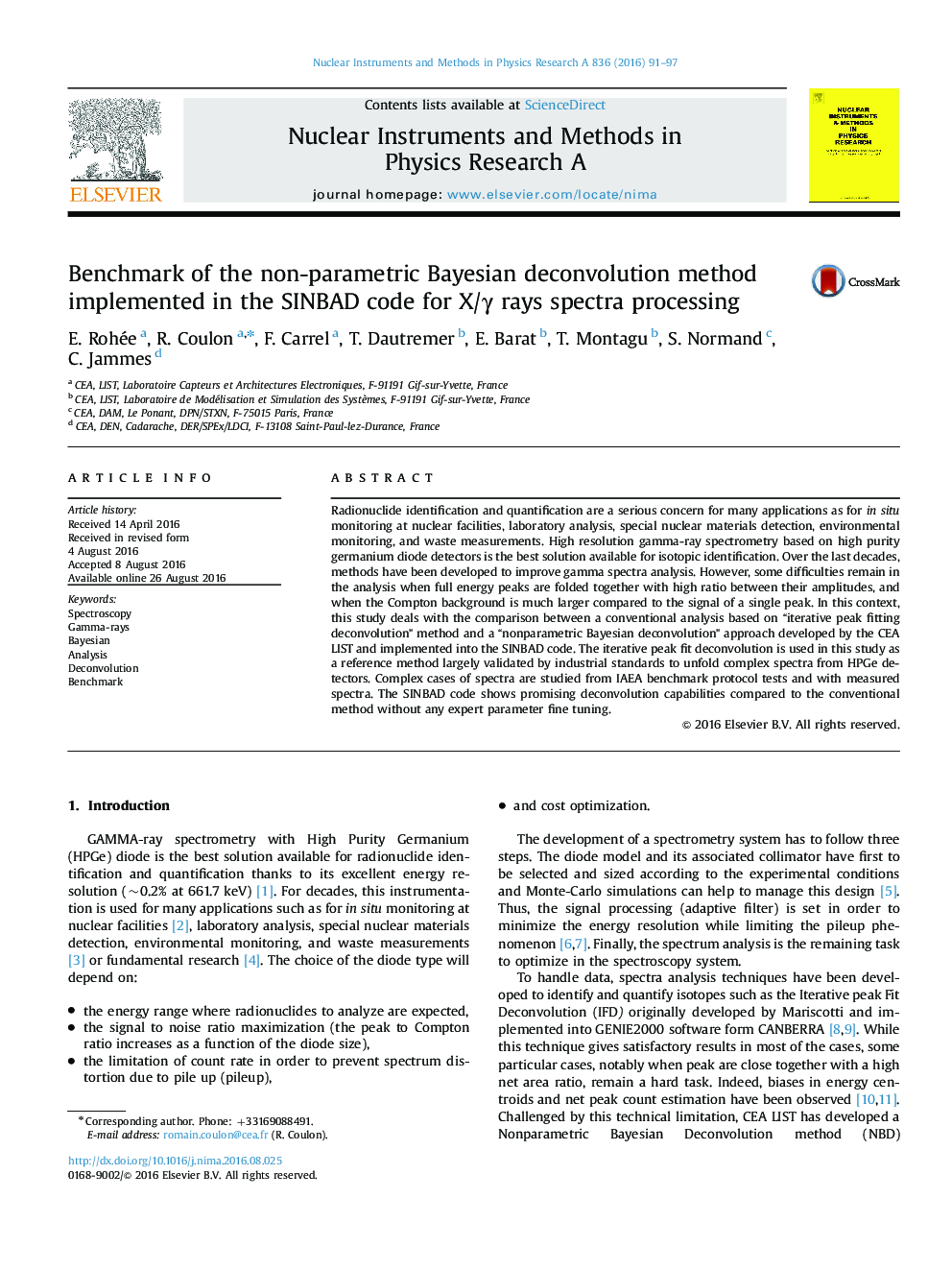| Article ID | Journal | Published Year | Pages | File Type |
|---|---|---|---|---|
| 8168151 | Nuclear Instruments and Methods in Physics Research Section A: Accelerators, Spectrometers, Detectors and Associated Equipment | 2016 | 7 Pages |
Abstract
Radionuclide identification and quantification are a serious concern for many applications as for in situ monitoring at nuclear facilities, laboratory analysis, special nuclear materials detection, environmental monitoring, and waste measurements. High resolution gamma-ray spectrometry based on high purity germanium diode detectors is the best solution available for isotopic identification. Over the last decades, methods have been developed to improve gamma spectra analysis. However, some difficulties remain in the analysis when full energy peaks are folded together with high ratio between their amplitudes, and when the Compton background is much larger compared to the signal of a single peak. In this context, this study deals with the comparison between a conventional analysis based on “iterative peak fitting deconvolution” method and a “nonparametric Bayesian deconvolution” approach developed by the CEA LIST and implemented into the SINBAD code. The iterative peak fit deconvolution is used in this study as a reference method largely validated by industrial standards to unfold complex spectra from HPGe detectors. Complex cases of spectra are studied from IAEA benchmark protocol tests and with measured spectra. The SINBAD code shows promising deconvolution capabilities compared to the conventional method without any expert parameter fine tuning.
Related Topics
Physical Sciences and Engineering
Physics and Astronomy
Instrumentation
Authors
E. Rohée, R. Coulon, F. Carrel, T. Dautremer, E. Barat, T. Montagu, S. Normand, C. Jammes,
